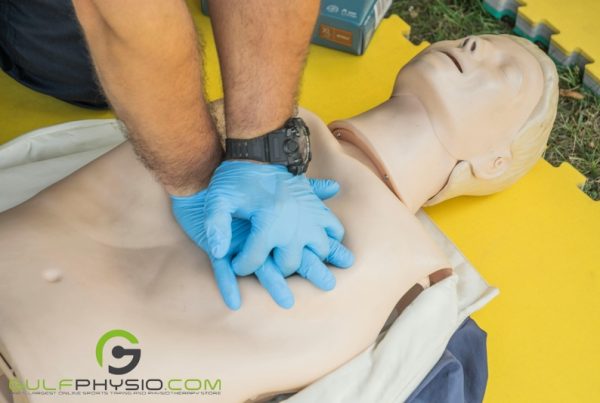
Long-distance driving is going to take a toll on motorists without the right exercises and safety health measures. Being a defensive driver isn’t enough to ensure health safety, motorists need to know proper lumbar support, stretching, warm-up exercises, and a healthy lifestyle.
Long hours of driving can cause musculoskeletal issues, most commonly lower back pain. Other complaints may be neck pain, cramps, and muscle sores. Being in a sitting position in a car seat is very uncomfortable, especially if you have poor posture or slouch forward while driving. These actions can take a toll on the back muscles and the spine.
Aside from this, driving can also overwork mental health because it is exhausting and stressful. It can cause tension that may be felt in the shoulders, neck, and back.
This blog will tackle how to drive safely without muscle pains and other health issues.
What are the risks of poor posture during long car trips?

Long car drives are already stressful because of traffic, road rage, and discomfort. Another source of stress and pain behind the wheel is poor posture and lack of exercise.
Without proper posture and less exercise, there could be increased discomfort in many parts of the body such as joints, neck, back, shoulders, arms, fingers, and wrists.
Without a remedy for bad posture, it may result in a worsened condition, leaving the driver to become more susceptible to more pain.
Can stretching help reduce back pain from driving?

Yes, it can. This is because driving is not considered as an exercise. When driving, you are using brain activity and concentration without moving the body, which can exhaust the body.
With the right type of stretching and exercise, it will create a positive experience for driving and may improve driving-related movements.

Walking, yoga, and stretching can help improve blood circulation and reduce body tension, which can be helpful for safe driving.
What are the best stretching exercises for long drives?

Sheridan advised stretching before, during, and after long drives for a pain-free driving experience. Without proper and regulated stretching, the motorist’s body will suffer from injuries and poor blood circulation.
Before long drives
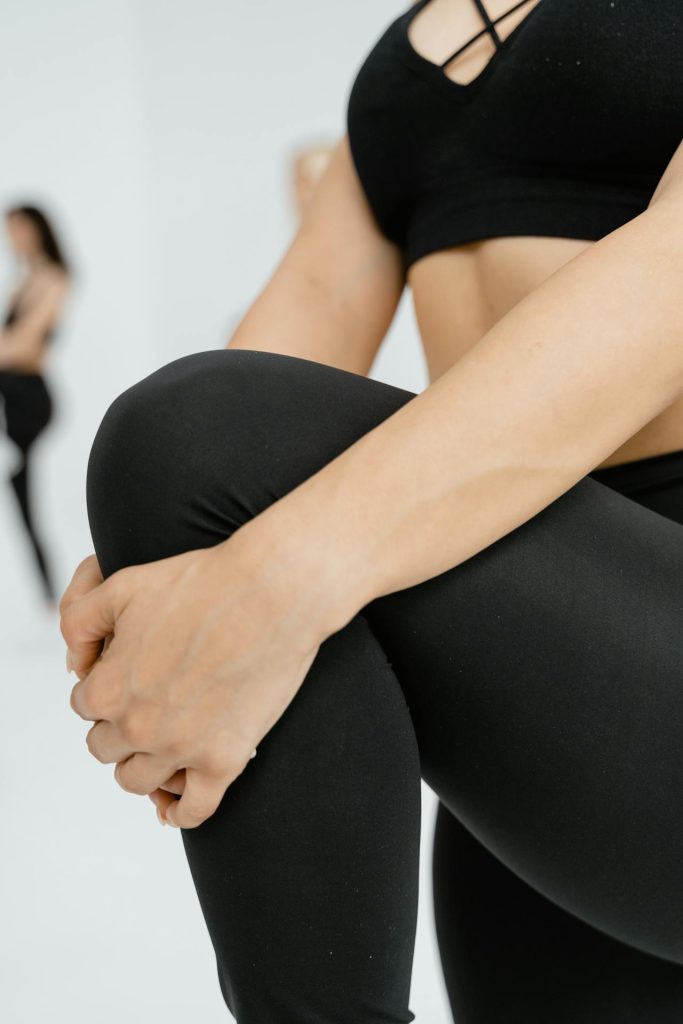
One recommended stretch is knee pulls, which can help with knee joints, quadriceps, and lower back muscles.
To do this, stand upright with both feet hip-width apart. Then, move the weight to the right leg and raise the other leg going to the chest while holding it with both hands. At the same time, raise the ball of the right foot while pulling the knee in.
Do this again, starting at the left leg for 1 minute.
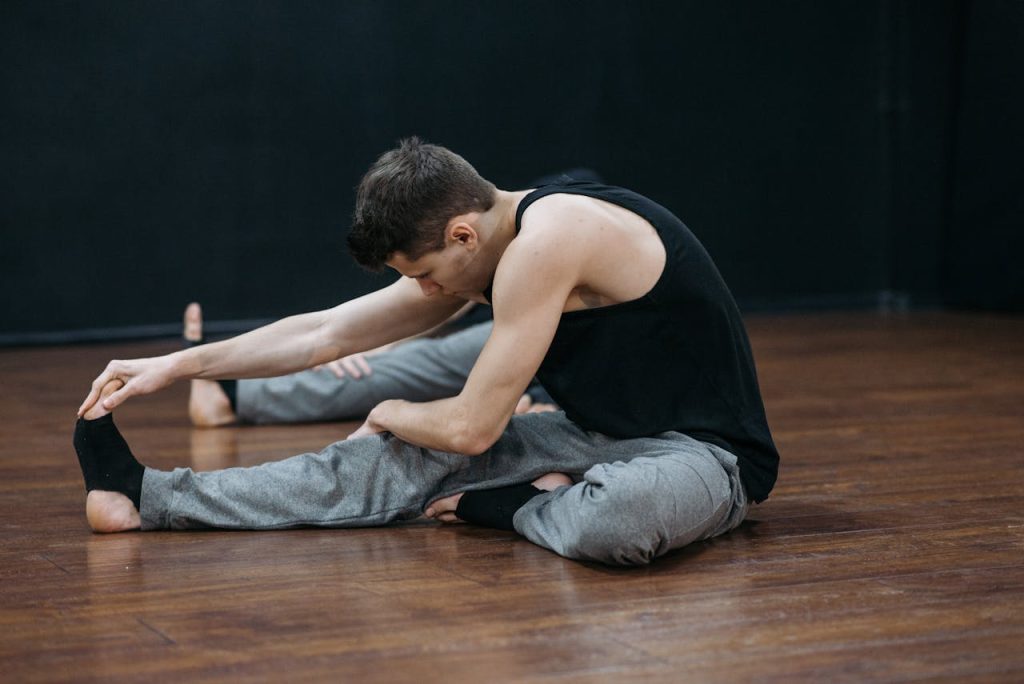
The next kind of stretch is hamstring stretch, which will target hamstrings, calves, and ankles.
To perform this, begin with the hands and knees. Then, tuck the toes and raise the hips while sitting bones toward the sky while lengthening the back. Both feet should be apart with the toes pointed straight ahead. Then, straighten the arms and draw the forearms in. Lift the arms away from the mat. Afterwards, straighten one leg by pressing the heel to the floor while bending the opposite leg. Continue to alternate bending and strengthening the legs in between 3 to 4-second pauses. Allow the neck to be long and align the ears between the upper arms. Then, focus on the belly button.
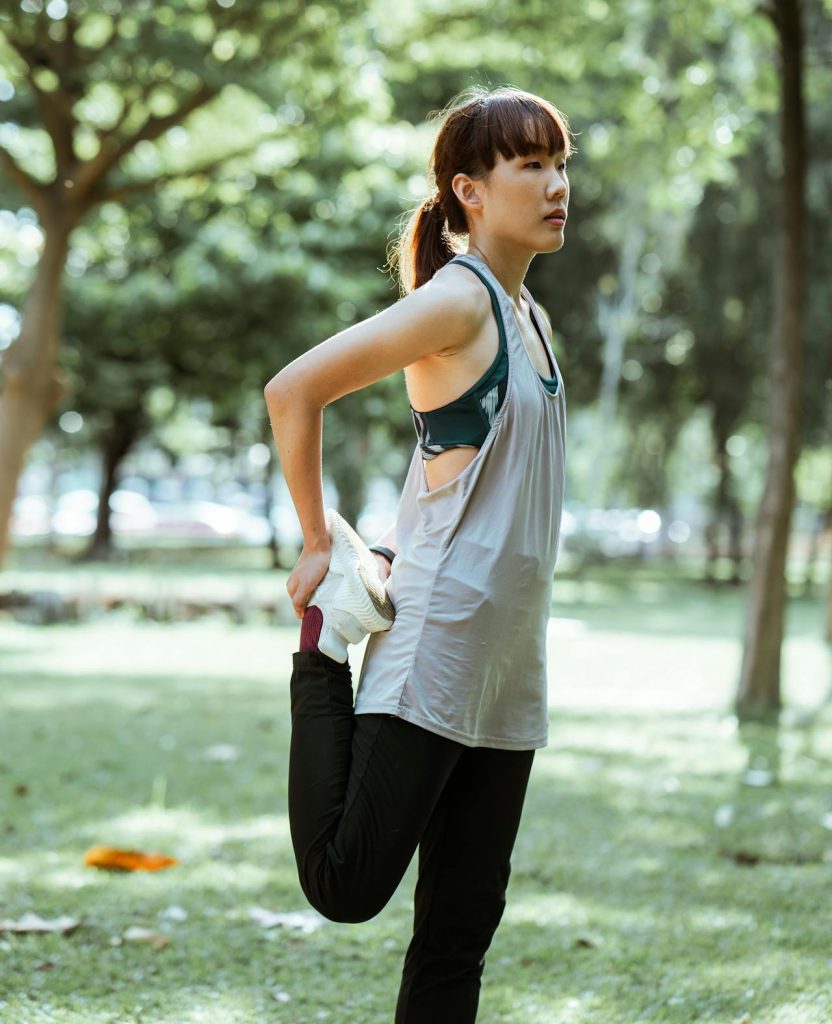
The third type of stretching before the long-distance ride is quad stretches. This will target quadriceps muscles, which are usually overworked due to continuous pressing of acceleration and brakes.
To do this stretching, begin by standing upright with the feet apart. Then, move the weight to the right leg as you raise the left heel towards the butt while grasping it with the left hand. As this happens, raise the right arm straight and onto the ball of the right foot. Switch to the other side and do this again for 60 seconds.
During long drives

While driving a car for long miles, it is recommended to do stretches while seated or when taking breaks from long drives.
The first type of stretch is the seated forearm stretch. To do this, sit tall and bring one arm straight out in front of you with the elbow straight and palm facing up. Slowly pull the fingers toward the body and feel the stretch on the forearm. Do this for 30 seconds to 1 minute. Then, repeat it on the opposite side.
The second stretch is the chest stretch. First, stand tall next to the car with the position of one arm at chest or weight level outside the car window. As your shoulder is down and back, begin the stretch by gently turning the body away from the car until you feel the stretch in the chest. Hold this position for 30 to 60 seconds. Do this again on the opposite side.
Next is the inner thigh stretch. To perform this, stand facing the car with feet slightly wider than shoulder width and toes pointed forward. Then, place your hands on the car for support.
Afterwards, sit back into the hips and move the weight toward the left side until you feel a stretch, not pain on your inner thigh. Do this stretch for half to one minute and again on the opposite side.
After long drives
Following the tiring drive, it is still essential to do stretches to allow the body to enhance body circulation and ensure recovery.
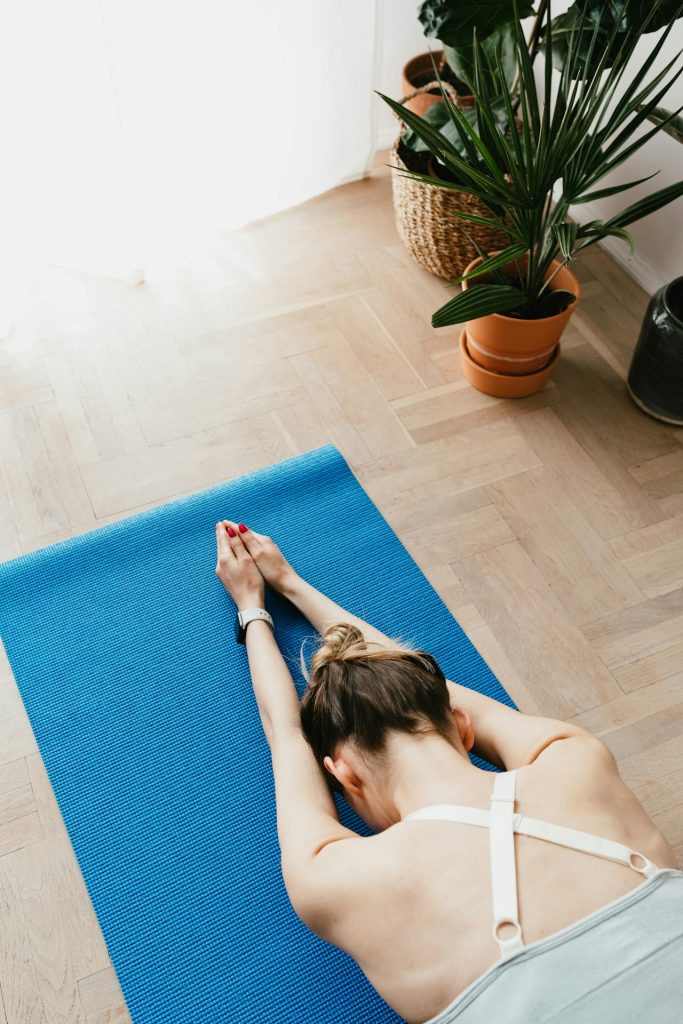
Sheridan advised doing inchworms for full-body recovery. To do this stretch, begin in an upright position while keeping the feet in the same spot. Then, bend over the hips, with the knees slightly bent until the hands are on the floor. Afterwards, walk the hands out until the plank position and arms are locked out. Then, walk the hands back towards the feet and rise back up to a standing position. Reach up towards the ceiling on the balls of the feet. Do this again for 60 seconds.

Next is the side-body extension with tricep stretch. First, bend the right elbow and bring the right elbow up to face the sky, with the right hand touching the shoulder behind you. Then, grab the right elbow with the left hand while leaning to the left to lengthen the right side of the body. Hold this position for several seconds and repeat to the opposite side.

The third stretch is the neck stretch. Long car rides can take a toll on the neck. First, drop the right ear toward the right shoulder. Then, take the right hand across the head toward the left ear and use it to put some weight on the left side of the head to help stretch the left side of the neck. Drop the left shoulder blade and relax your jaw. Hold this position for several seconds and do this again on the other side.
How often should you take a break when driving long distances?

It’s important to take breaks while driving long distances. Sheridan recommends taking breaks every two hours but when you have back pain, you can take breaks for every 30 minutes. To do this, look into the map to your destination and pin stops for your routes.
Frequent breaks will also help you take stretches or exercise while on the road. Some exercises are walking and stretching to reduce stiffness, poor blood flow, and tension in the joints.
It may also be a good idea to look for grassy areas where you can do stretches or yoga positions to relieve back pain.
“If you sit for too long, it will overwork the lower extremities and increase the risk of swelling on the joints,” said Sheridan.
What are the most effective ways to prevent stiffness during long drives?
To avoid body pain and poor posture during long rides, Sheridan advised making some adjustments in the driver’s seat and following healthy lifestyle habits.
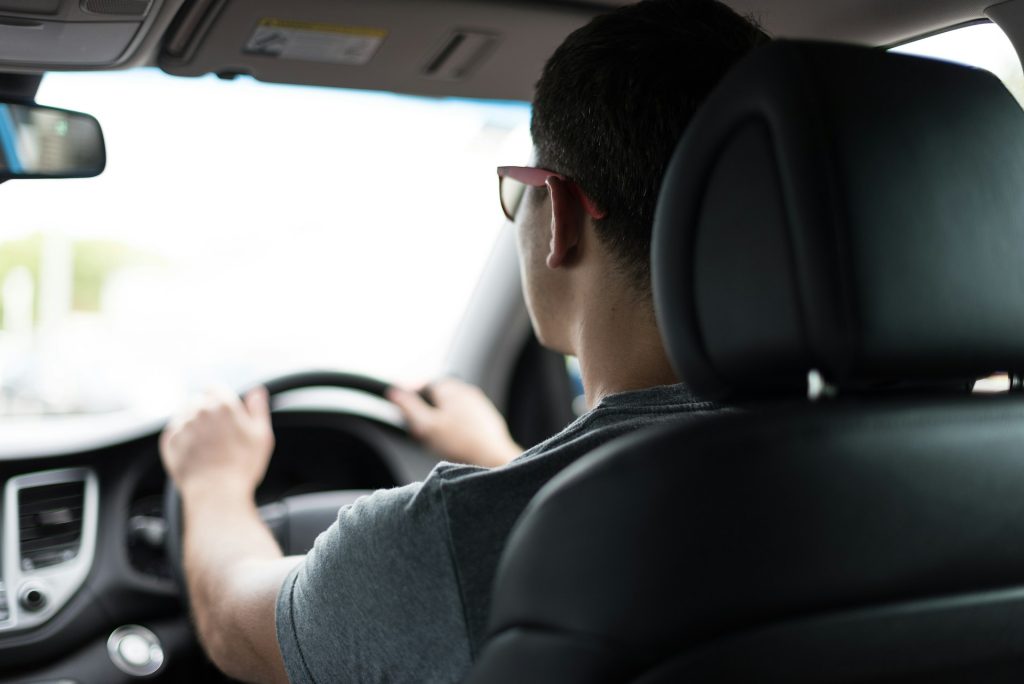
First, Sheridan recommends adjusting the seat accordingly. Move the seat closer or away from the steering wheel. Then, check if you are sitting too high or low, comparing the distance to the steering wheel. As your seat is adjusted, it will improve better alignment and support your body while driving. Related to this, put the hand position at 4 and 8 to ensure restful shoulder and neck support.
The second tip is relaxing the arms to avoid cramps and pain on the shoulders. To do this, the arms should not be reaching out of the socket while driving. There should be a relaxed and slow bend in the elbow.
Next is adjusting the back of the head on the seat. To do this, the back of the head should be touching the headrest with the chin level and shoulders back.
The fourth tip is investing in a lumbar support pillow. This can be used when there is space between the seat and the lower back. It can address the lower back pain and support the spine.
Another tip is to wear comfortable shoes. When you invest in proper footwear, it will reduce discomfort for the feet. It will also lessen problems when using the brakes and acceleration.
Aside from the feet, using improper footwear such as flip-flops and high heels can also contribute to back pain.
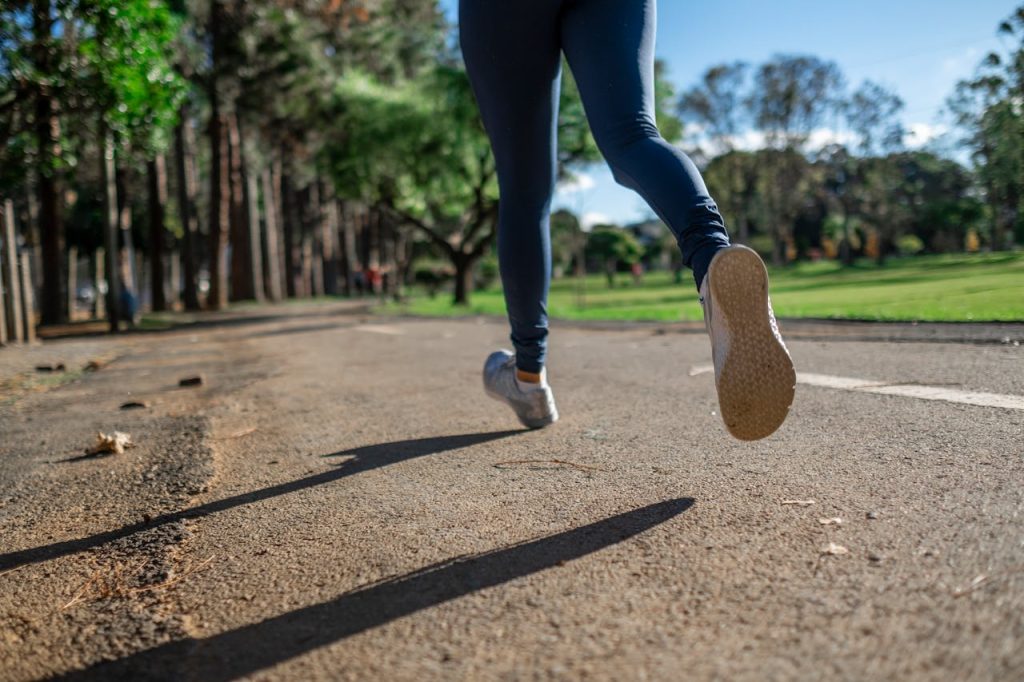
“For example, high heels can alter your sitting height position and posture, adding risk to lower back pain. When you already fixed your seating adjustment, it may not work now that you used a different type of shoe,” said Sheridan.
“I recommend using sneakers or shoes with traction. Cushioned shoes will also help absorb vibration from driving pedals,” added Sheridan.

Sheridan also advised drinking fluids to stay hydrated while driving. Getting hydrated will reduce the risk of back spasms and painful muscles in your legs and back.
“You can bring water bottles or sports drinks to replenish the body as you drive on long-distance trips,” explained Sheridan.
Lastly, ensure to keep getting energized, which will avoid abrupt sleeping while driving. This can cause accidents and injuries on the road.
Getting fully awake on a long drive can be different for anyone. However, Sheridan recommends chewing gum or having upbeat music to keep you awake.
“Just make sure the practice that you do while driving will not be so distracting that they would cause accidents,” said Sheridan.


